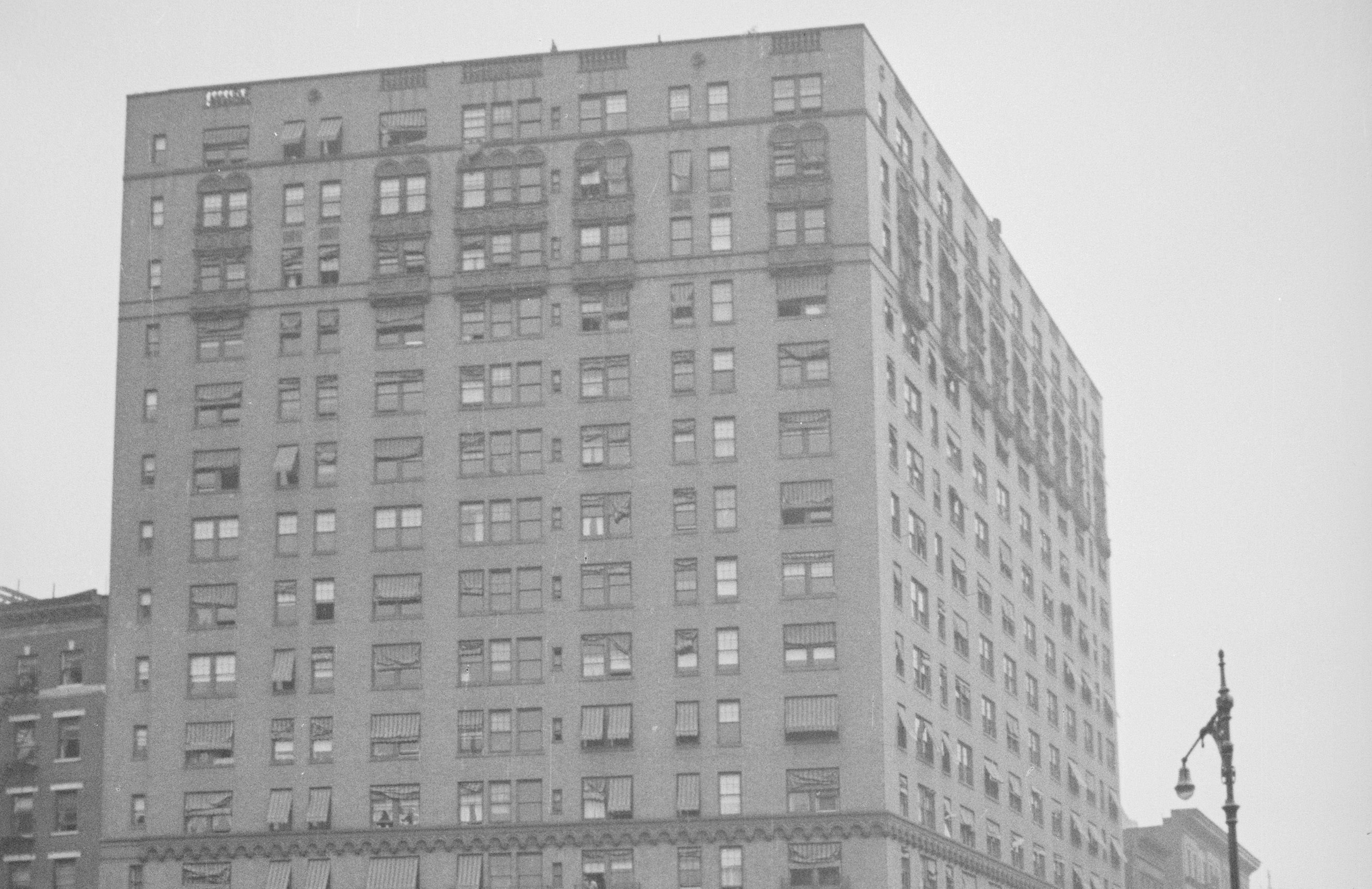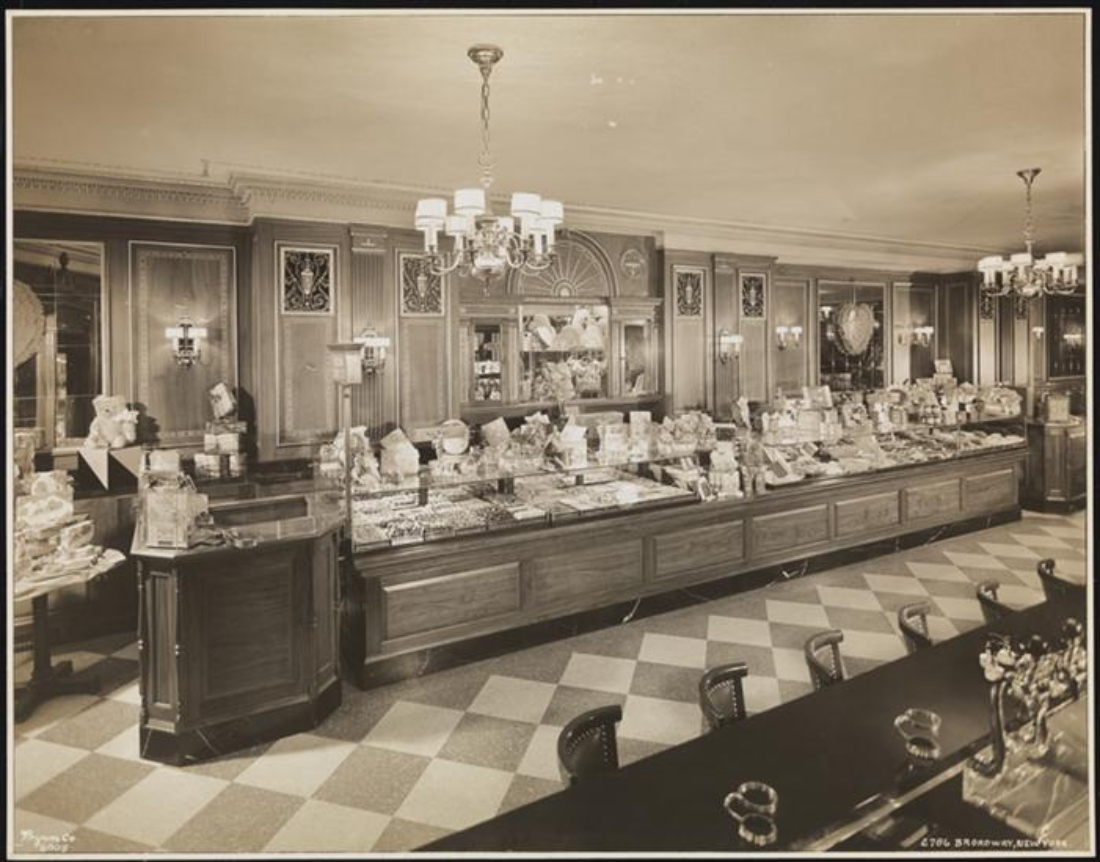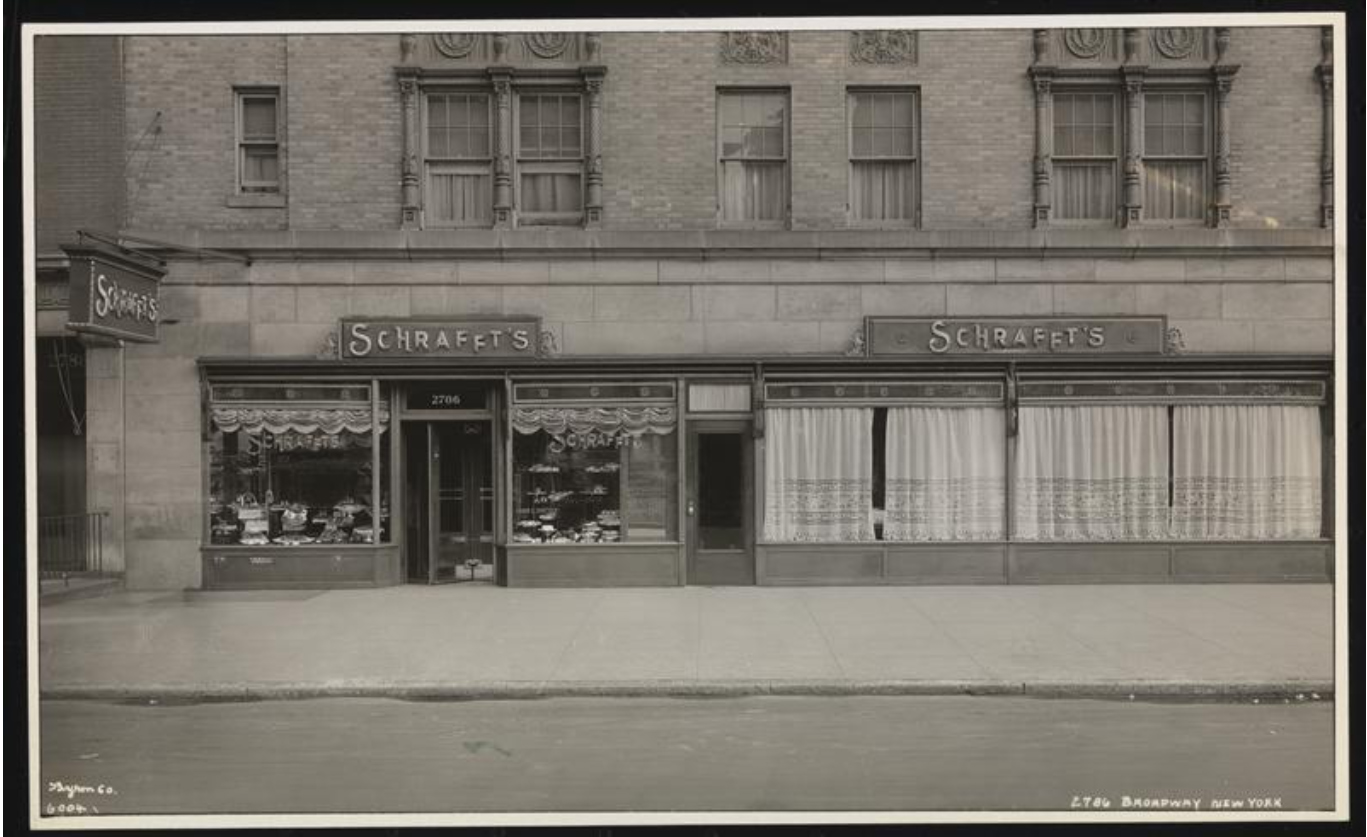
The Aberdeen
by Tom Miller
The Ridgewood Apartment building, on the northeast corner of Broadway and 107th Street, was designed in 1900 by George Keister. It had nearly survived three decades when the Keyaha Realty Corporation demolished it and hired the architectural firm of Sugarman & Berger to design a replacement structure.
Completed in 1930, at the height of the Great Depression, the building was known by its residential address, 245 West 107th Street. Sugarman & Berger placed two stores on the Broadway side and embellished the brown brick façade above ground level with terra cotta, Italian Renaissance-influenced decoration—double-height arches with cherubic faces in the tympana, an ornate corbel table that ran between the fourth and fifth floors, and romantic balconettes at the twelfth floor. Rather than a cornice, the architects used a brick parapet, pierced with terra cotta balustrades.
An advertisement for the apartments (of either four or five rooms) touted, “all apartments have dining alcoves; 2 master bedrooms; 5-room suites have 3 master bedrooms, 2 master baths.” Rent for a five-room apartment was $1,700 per year, or about $2,741 a month today. There were also two penthouses on the topmost floor.
On October 6, 1932, burglars broke in and made off with items of substantial value.
Among the initial residents, and one of its most colorful was Robert Stoll. For a full decade, between 1885 and 1895, he held the national championship on the flying rings—a gymnastics event similar to today’s still rings. The New York Sun called him “a star athletic with the New York Athletic Club.” Stoll was for several years a judge and timekeeper for the Amateur Athletic Union. He died in his apartment on July 6, 1931, at the age of 70.
Sava Keyaha was the owner of the Keyaha Realty Corporation which erected the building. He and his wife, Mary, moved into one of the penthouses. On October 6, 1932, burglars broke in and made off with items of substantial value. The Keyahas filed an insurance claim for $40,000 (closer to $760,000 in today’s money). In August the following year, the couple was arrested. The New York Sun reported, “The indictment charges that the robbery was staged with the cooperation of the Keyahas.” It was an early indication of the once-wealthy couple’s financial straits.
Another resident on the wrong side of the law was gangster Joseph Weiner. He was convicted in July 1933 on charges of “conspiracy in connection with poultry racketeering in the Bronx.” On April 6, 1932, after the S. S. & B. Live Poultry Market, refused to submit to the gang’s extortion, “seven of Weiner’s cohorts” wrecked the business. On February 5, 1934, Weiner appeared in court “nattily dressed as usual,” according to The New York Sun. He was committed to Welfare Island “for an indeterminate period” by two judges.
In the meantime, the Keyahas’ troubles were not improving. Erecting an apartment building during the Depression had proved to be an imprudent move. On October 5, 1936, The Daily Argus reported that Keyaha, “an unemployed stock trader,” had filed for bankruptcy.
Through mid-century the building continued to house (mostly) respectable, middle-class residents. Contractor Max Patsy, president of Patsy & Fuhrman, Inc., and his wife, the former Linda Rosenhair, lived here in the 1940’s. Born in Austria in 1877, Patsy had come to the United States at the age of 22. His firm was especially known for construction of school buildings. Among those for which he was responsible were Hunter College, the Benjamin Franklin High School and Seward Park High School in Manhattan, and the Samuel Gompers High School in the Bronx.
Living here at the same time was Jacob Eder, the head of the Careful House & Window Cleaning Company. A widow, he died at Beth David Hospital at the age of 66 on November 14, 1945.
Erecting an apartment building during the Depression had proved to be an imprudent move.
Around that time insurance executive Robert B. Blaikie moved in. He was a member of the firm of Blaikie, Ryan & Sampson at 76 William Street. His passion, however, was politics. A staunch Democrat, he was first elected as the Democratic Leader of the 7th Assembly District of New York County in 1945. On June 3, 1950, The New York Age called him “one of the most devoted members of officialdom here.”
A renovation completed in 1954 resulted in eight apartments per floor. The penthouse level now contained four apartments.
By the 1960’s the larger of the two stores was home to a Pioneer Super Market. On the evening of January 6, 1975, a man attempted to steal something, and was confronted by the manager, Alcinde Borroto, and two teenaged workers, Hector Gusman and Ismael Dega. The would-be shoplifter was allowed to leave, but he was not happy.
At 9:35 he returned, stood at the entrance, and fired a gun at the three men before fleeing. Alcinde Borroto was shot in the neck and gravely wounded. Both Hector Gusman and Ismael Dega, who were 15 and 16 years old respectively, suffered arm wounds.
In 1980 the building was converted to a cooperative. It was most likely at that time that it was christened The Aberdeen. Today Sugarman & Berger’s handsome Depression Era apartment building that bankrupt its builder, is almost entirely intact.
Tom Miller is a social historian and blogger at daytoninmanhattan.blogspot.com
Building Database
Keep Exploring
Be a part of history!
Think Local First to support the businesses at 2780-2786 Broadway:
Meet Lisa Dolin!
Meet Ebet Roberts!




